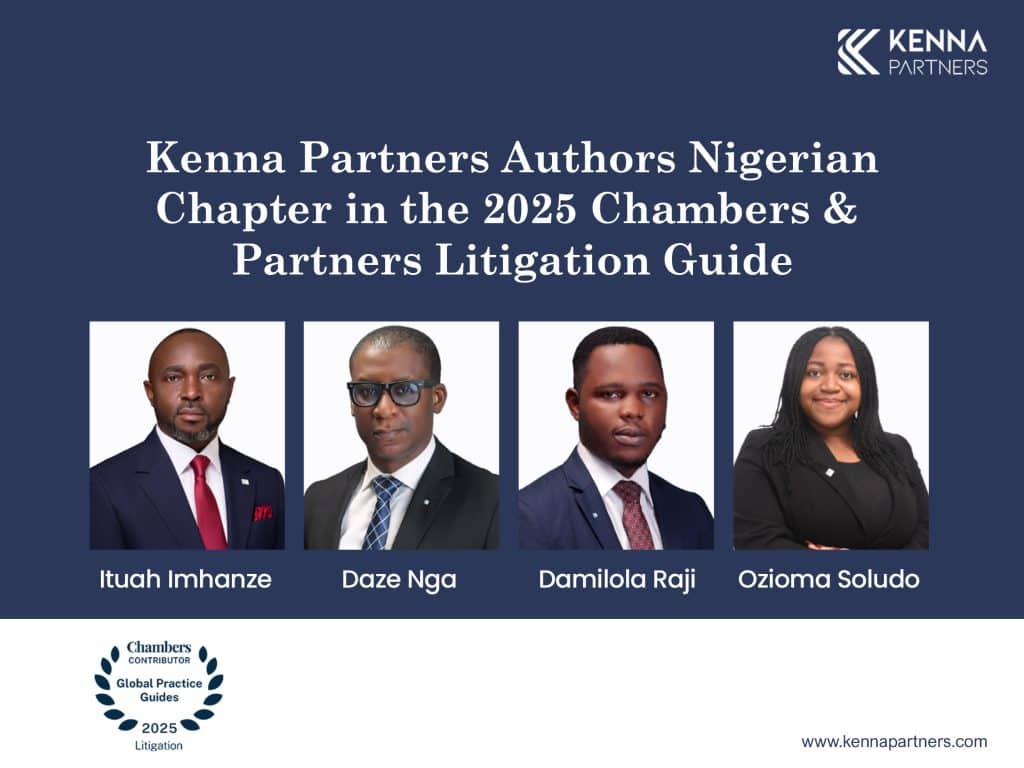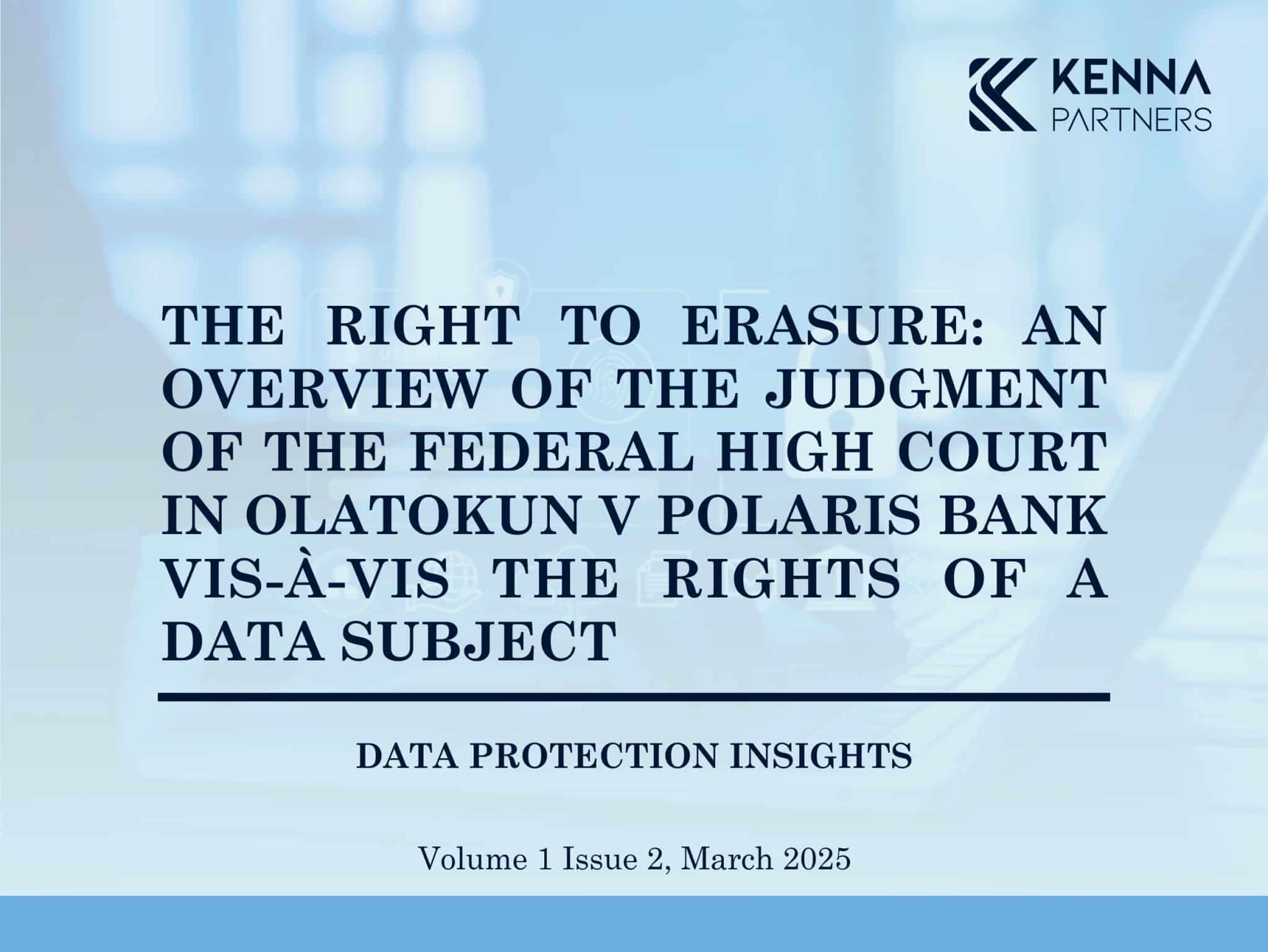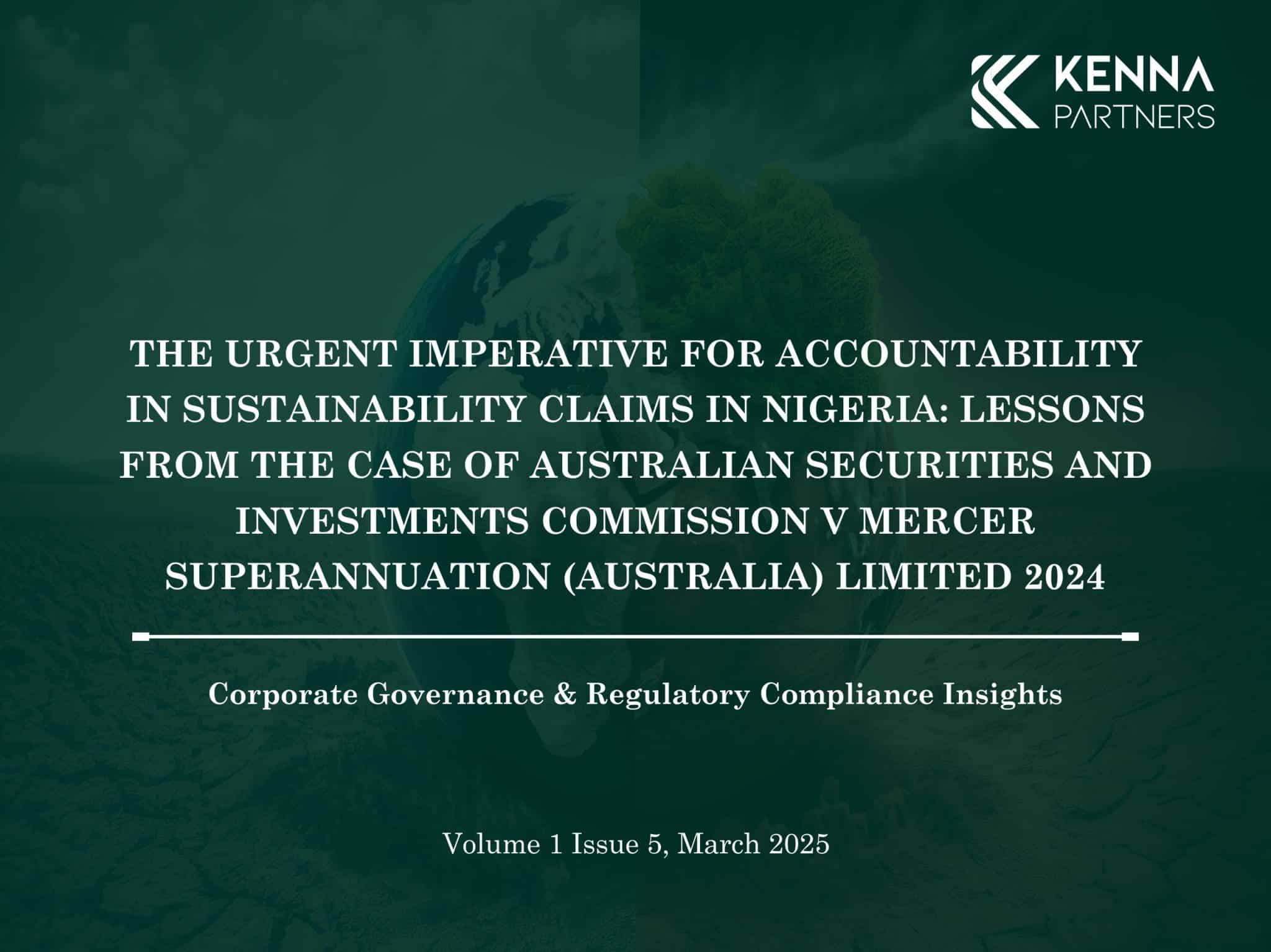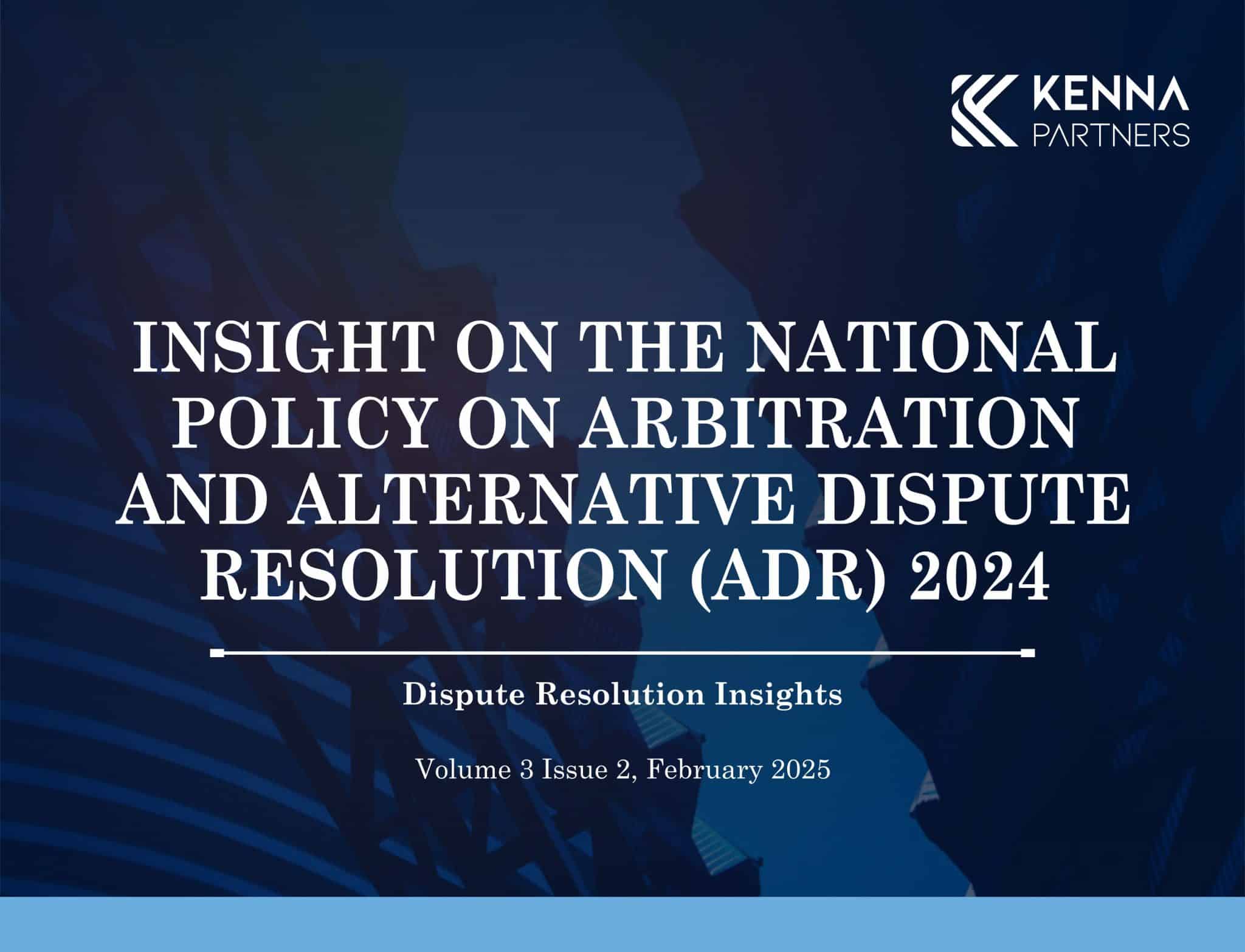2025 Chambers’ Litigation Global Practice Guide – Nigerian Trends & Development

Table of Contents
- Loading table of contents...
Outlook for 2025
The Nigerian litigation landscape is transforming significantly as the country’s legal system aligns with contemporary global trends. Fundamental reforms, such as adopting modern technologies in judicial processes, recent developments in labour law jurisprudence, and the incorporation of modernised procedural rules, reflect Nigeria’s commitment to improving the efficiency and accessibility of its courts.
At the forefront of these changes are the newly introduced Supreme Court Rules 2024, which replaced the Supreme Court Rules of 1985 (the “1985 Rules”). The new rules address critical procedural inefficiencies and introduce technological innovations to streamline case management and reduce delays.
In labour law, the National Industrial Court of Nigeria (NICN) is making strides toward aligning its decisions with global best practices, particularly in prioritising employee rights and fairness in the workplace. However, the NICN’s progressive decisions often conflict with the rulings of the superior courts, which tend to adhere to traditional common law principles. This conflict sometimes creates uncertainty for employers and employees alike, and as Nigeria moves forward, these tensions will likely muddy the waters around labour litigation.
Another significant legal development in the Nigerian litigation space is the recent 2024 Supreme Court of Nigeria’s decision in Total Exploration & Production (Nig) Ltd v Okwu & Ors (2024) LPELR-62623(SC), which addressed the long-standing controversy surrounding the competence of multiple applicants filing to enforce their rights under the Fundamental Rights (Enforcement Procedure) Rules 2009. The apex court’s decision has provided much-needed clarity on this procedural issue, which will shape how litigants file and pursue fundamental rights claims moving forward.
This article explores these three key trends and developments, examining their potential to influence the litigation space in Nigeria and set the tone for the future of dispute resolution across these areas.
Supreme Court Rules 2024
The 1985 Rules of the Supreme Court guided procedures at Nigeria’s highest court for close to four decades. While the 1985 Rules worked well for a long time, the legal landscape has changed significantly and dramatically, and the need for greater efficiency in the justice system has become more urgent.
In August 2024, just before his retirement, the former Chief Justice of Nigeria, Honourable Justice Olukayode Ariwoola, approved and signed the Supreme Court Rules 2024 (the “New Rules”). The New Rules introduce various reforms to enhance the Supreme Court’s efficiency, transparency and accessibility. These reforms include provisions for electronic filing, virtual hearings, and stricter timelines for filing processes, all intended to reduce delays and improve case management.
The introduction of these rules also reflects the broader efforts within Nigeria’s judiciary to embrace digital transformation, particularly in the wake of the disruptions caused by the COVID-19 pandemic. By incorporating these changes, the Supreme Court aligns with digital transformation trends already embraced by many lower courts, such as virtual hearings, e-filings and remote case management. Though somewhat delayed in adopting these advancements, the Supreme Court’s reforms now reinforce the judiciary’s shift towards efficiency and accessibility, setting a precedent for continued modernisation across Nigeria’s legal landscape.
Fundamental changes in the New Rules
Electronic filing
Order 17 of the New Rules introduces mandatory electronic filing through the Nigeria Case Management System (NCMS) E-filing portal, replacing the previously manual, paper-based system. The order provides that once this provision comes into effect, no other mode of filing will be valid. The order further stipulates that only documents submitted through and stored in the Nigeria Case Management System will be considered official records of the Supreme Court. This provision is entirely novel, as the previous rules did not provide for any form of filing, save for the traditional method of physical filing processes at the Supreme Court’s registry. It is essential to note the provision of the rules, which states that the electronic filing system must run in parallel with the existing manual filing procedure until the chief justice may otherwise direct. While awaiting the direction of the chief justice following this provision, litigants and legal practitioners need to familiarise themselves with the electronic filing process and procedure, as the complete discontinuation of the manual filing system is anticipated in the coming year(s).
Electronic filing drastically reduces delays associated with physical filing, allowing for real-time submission of court documents, improving accessibility, and enhancing transparency. Electronic filings can be particularly beneficial for litigants in remote areas, as they reduce the need to travel to file documents and processes, thereby improving access to justice.
Virtual hearings
Similarly, Order 18 of the New Rules officially recognises virtual hearings. While the practice of holding court sessions via video-conferencing began during the COVID-19 pandemic, it was not formalised as an acceptable procedure for conducting court sessions at the Supreme Court until the adoption of the New Rules. The rules state that the court may, upon application by any of the parties or even on its own, conduct proceedings virtually where it deems appropriate.
Virtual hearings reduce the cost and time associated with physical attendance in court, providing greater accessibility for litigants and their counsel. This reform also enhances the court’s ability to manage cases more efficiently, as virtual hearings can be scheduled flexibly. However, challenges like unreliable internet access in some regions may pose difficulties.
Stricter timelines
In the New Rules, Order 6, Rule 4 significantly reduces the time for the lower court officials (the registrar of the Court of Appeal) to transmit a physical and electronic record from six months to three months after the filing of a notice of appeal. Additionally, Order 16 of the 2024 Rules introduces shorter timelines for filing briefs. An appellant now has 45 days from the date of service on them of the record of appeal from the court below (previously ten weeks), and a respondent has 30 days to file the respondent’s brief of argument (previously eight weeks).
Furthermore, Order 4, Rule 2 provides that a respondent will have 14 days to file processes in response to any application filed before the court. The applicant will have seven days to file a reply, if any. The previous rules were silent on time limits for responding to applications before the court.
Order 16, Rule 11 also reduces the time allowed for oral arguments by legal practitioners in support of briefs of arguments from one hour to 15 minutes.
These tighter deadlines push litigants and lawyers to act more promptly, reducing delays and expediting litigation. By enforcing strict adherence to timelines as provided in the New Rules, the Supreme Court will reduce the risk and incidence of backlog, and ensure faster resolution of cases.
Service of process
Order 3 of the New Rules provides that any reference to an address for service within the rules refers to a physical, postal or electronic mail address, a phone number, or any other available mode of communication where court documents may be sent if personal service is not required. On the specific issue of service of a notice of appeal, the New Rules state that the notice may either be served on the respondent personally or on the legal practitioner who represented the respondent at the Court of Appeal, and that the service may be done by electronic mail or any other electronic means.
This provision is timely, as it lays to rest the age-long controversy created by conflicting decisions of the Supreme Court on the issue of service of notice of appeal. In the case of Odey v Alaga (2021) 13 NWLR (Pt 1792) page 1, the Supreme Court decided that service of the notice of appeal on counsel instead of personally serving the respondent rendered the appeal incompetent. In the more recent case of Amaechi v Gov. of Rivers State (2022) 17 NWLR (Pt 1858) page 1, the court deviated from its earlier reasoning and decided that a notice of appeal served on the respondent’s counsel constitutes proper service, provided the court is satisfied that the notice of appeal has been effectively communicated to the respondent.
The adoption of this provision regarding service is sure to eliminate delays related to objections and disputes over the issue of proper service, thereby improving the speed of litigation.
Motion on notice and page limits
While the 1985 Rules stated that applications to the court should be made by notice of motion, supported by an affidavit, the New Rules require applications to be made by notice of motion, supported by not just an affidavit but also by a written address. Order 4 introduces a ten-page limit for written addresses, requiring more concise and precise arguments.
This reform will undoubtedly improve the clarity and efficiency of court proceedings by encouraging brevity in legal arguments. It also reduces the workload for justices, allowing them to evaluate applications and deliver rulings more quickly.
Non-contentious application
The New Rules in Order 4, Rule 11 state that if a respondent to an application does not intend to contest the application, the respondent must file a notice of non-contention within 14 days of the application being served on them.
This rule further provides that a justice in chambers can now consider and determine such non-contentious applications. This provision aligns with Section 11 of the Supreme Court Act, which allows a single justice of the Supreme Court to exercise any power vested in the court, other than the final determination of any cause or matter.
This provision reduces the need for a full panel to hear an uncontested application, thereby expediting decisions on such applications and ensuring a faster resolution of the entire matter.
Costs and penalties
Order 12 of the New Rules introduces significant costs for civil appeals, setting minimum costs at NGN2 million (around USD1,222 or GBP940) in favour of the successful parties and NGN1 million (around USD611 or GBP470) as costs for delaying the hearing of the appeal on the day it has been fixed for hearing. A penalty of NGN500,000 (around USD305 or GBP235) applies to civil applications, while a minimum of NGN2 million (around USD1,222 or GBP940) is prescribed for an abuse of court process. The 1985 Rules did not specify minimum costs in such a prescriptive manner, leading to inconsistencies in the awarding of costs.
In addition, Order 16, Rule 9 provides that where an appellant has failed to file their brief within the period specified in the New Rules, or as extended by the court, the court may dismiss the appeal in chambers without hearing argument. This deviates from the provisions of the 1985 Rules where the penalty for failing to file a brief within time was an order of striking out, not dismissal. The effect of the new provision is that the appellant will not have the opportunity to refile the appeal where the same has been dismissed for want of diligent prosecution.
These new provisions on cost and penalties will deter frivolous appeals and delays, ensuring that only essential and well-prepared appeals reach the court. By imposing substantial financial consequences for delays, the court encourages efficiency and compliance with procedural rules. These provisions could also result in fewer spurious applications, thus freeing up judicial resources for more substantive matters.
Impact of the New Rules on litigation practice in Nigeria
Reduction of delays
Stricter timelines for filing briefs and documents compel legal practitioners to act urgently, reducing unnecessary delays that previously plagued the appellate process.
Technological efficiencies
The introduction of electronic filing and virtual hearings eliminates many logistical hurdles that slowed litigation under the 1985 Rules. Streamlining filings and court attendance makes the litigation process faster and more efficient.
Improved access for remote litigants
Virtual hearings and electronic filing reduce the need for physical appearances and manual filings, making it easier for litigants from remote or rural areas to access the Supreme Court. These technologies democratise the litigation process and ensure that justice is more readily accessible.
Influence on lower courts
The Supreme Court’s adoption of tech-driven processes and the other laudable reforms in the New Rules will likely encourage lower courts to adopt similar reforms, fostering a more modern and efficient judiciary across all levels.
In summary, the Supreme Court Rules 2024 mark a significant departure from the outdated practices of the past, introducing technology and stricter procedural controls to improve the efficiency of the litigation process. These changes are set to broadly impact litigation practice in Nigeria as we enter 2025 and beyond.
Trends and Developments in Labour Law Litigation for 2025
Labour law litigation in Nigeria has witnessed significant developments, particularly in how the courts address issues arising from the termination of employment. The National Industrial Court of Nigeria (NICN), empowered by Section 254C of the Constitution of the Federal Republic of Nigeria (Third Alteration) Act, 2010, has consistently championed international labour standards, introducing changes prioritising employee rights and fair treatment in the workplace. However, the decisions of the NICN often conflict with the more conservative views of the superior courts, particularly the Court of Appeal and the Supreme Court, which tend to uphold traditional common law principles. This ongoing tension will shape the landscape of labour litigation in 2025, potentially impacting how employment disputes are resolved.
The tension between the NICN and the superior courts
The NICN’s approach to employment termination has been increasingly influenced by international best practices, especially the International Labour Organisation (ILO) Termination of Employment Convention (No 158). The NICN has ruled that terminating employment without a valid reason constitutes unfair labour practice, in accordance with international standards. For instance, in cases like Ebere Onyekachi Aloysius v Diamond Bank Plc (2015) 58 NLLR 92, the NICN held that termination without justifiable cause violated international labour standards.
However, the Court of Appeal has consistently upheld the common law position, where an employer can terminate an employee for any reason or no reason at all, provided the employment contract terms are followed. The Keystone Bank v Afolabi (2017) LPELR-42390 (CA) decision reinforced this position, emphasising that the contractual agreement between employer and employee precedes international labour standards, unless explicitly incorporated into the contract. The Supreme Court further strengthened this conservative stance in the 2024 decision in Dangote Cement Plc v Ager & Anor (2024) LPELR-61800 (SC), where the court reaffirmed that employers need not provide a reason for termination, provided that the contract terms are upheld.
NICN’s recalibration
Following the Court of Appeal’s lead, the NICN has started recalibrating its approach in some instances, aligning more with the traditional view. In Continental Reinsurance Plc v Kanma Maduka Okafor (2020) JELR 91426 (NICN), the NICN ruled that when a contract allows for termination without cause, an employer is not obliged to provide a reason, thus respecting the sanctity of the contract. This shift in philosophy signals that while the NICN may favour international standards, it increasingly acknowledges the superior courts’ emphasis on contractual obligations.
Implications for future labour litigation
As Nigeria approaches 2025, labour law litigation will likely see ongoing disputes between these two judicial philosophies. With the NICN’s mandate to apply international best practices imposed by Section 254C of the Constitution of the Federal Republic of Nigeria (Third Alteration) Act, 2010, the NICN will continue pushing for greater employee protections. At the same time, the Court of Appeal and Supreme Court are maintaining a stricter adherence to the sanctity of contract. Employers will need to draft contracts carefully, specifying terms of termination to avoid conflicts. On the other hand, employees may continue to challenge NICN terminations, citing unfair practices under international standards. What is certain is that the legal tension between these approaches will continue to define labour law litigation in 2025 and beyond, with both employers and employees seeking clarity from the courts.
Trends and Developments in Fundamental Rights Litigation for 2025
In recent years, fundamental rights litigation has become a growing area of focus in Nigerian law, with the courts taking a more proactive stance in enforcing constitutional rights under the Fundamental Rights (Enforcement Procedure) Rules 2009 (the “FREP Rules”).
Total Exploration & Production (Nig) Ltd v Okwu & Ors (2024) LPELR-62623(SC)
The Total Exploration & Production (Nig) Ltd v Okwu & Ors case marks a significant development in the area of fundamental rights enforcement in Nigeria. In this case, the Supreme Court of Nigeria addressed the procedural issue of whether multiple applicants can jointly file a single action to enforce their rights under the FREP Rules. The case involved a group of applicants seeking redress for alleged violations of their fundamental rights, and raised the question of procedural competence in multi-party applications.
Key issue addressed
The main issue was whether the FREP Rules permit joint applications where multiple individuals claim their fundamental rights were violated under similar or identical circumstances. This issue arose because of previous conflicting decisions of the Court of Appeal, with some rulings holding that each applicant must file separate actions, while others allowed for collective filings. In the more recent case of Udo v Robson & Ors (2018) LPELR-45183 (CA), the Court of Appeal decided that more than one person cannot apply to enforce a right under the FREP Rules.
The Supreme Court’s decision
The Supreme Court in Total Exploration & Production (Nig) Ltd v Okwu & Ors resolved this controversy by affirming that joint applications are procedurally competent as long as the claims arise from a common set of facts. The court emphasised the importance of promoting judicial efficiency and reducing procedural technicalities that could obstruct access to justice.
It also highlighted that the FREP Rules ensure that individuals whose rights are violated can seek redress without facing unnecessary procedural hurdles. By allowing joint applications, the court underscored the need for flexibility in handling fundamental rights claims, particularly in cases involving groups or communities with common grievances.
Implications for future litigation
Greater access to justice for groups
The decision paves the way for collective enforcement of fundamental rights, especially for marginalised groups facing systemic violations. This decision will encourage more groups of individuals, whether workers, communities or other vulnerable parties, to jointly file claims, reducing the financial and procedural burden of filing multiple separate actions.
Judicial efficiency
The Supreme Court has enhanced judicial efficiency by allowing joint applications. This decision reduces the risk of conflicting judgments from multiple cases arising from the same facts. It also prevents the courts from being inundated with identical or overlapping claims, thus speeding up the resolution of fundamental rights-based litigation.
Broader interpretation of FREP Rules
The ruling signals a more comprehensive interpretation of the FREP Rules, with courts increasingly prioritising substantial justice over procedural technicalities. This trend aligns with the modern judicial approach of ensuring that technicalities do not hinder individuals from enforcing their constitutional rights.
Rise in group rights litigation
As more groups become aware of their ability to file joint applications, there may be an increase in group rights litigation. It could include cases related to land rights, environmental harm, or community-wide violations, where collective grievances are common. The decision may encourage more community-based organisations and civil society groups to bring claims for affected populations.
In summary, the Supreme Court’s decision in the Total Exploration case has expanded access to justice and reinforced the principle that procedural hurdles should not impede the enforcement of constitutional rights. As this decision takes effect, it is expected to influence future cases, leading to more streamlined and efficient fundamental rights litigation in Nigeria.
Conclusion
The Nigerian litigation landscape is undergoing transformative changes, driven by reforms such as the Supreme Court Rules 2024, the evolving jurisprudence of the National Industrial Court (NIC), and landmark decisions like the Total Exploration case. As we move forward, these trends reflect a legal system increasingly focused on efficiency, transparency and global best practices. These developments are reshaping the future of dispute resolution in Nigeria and setting a new standard for litigation.
Paper originally published in Chambers








